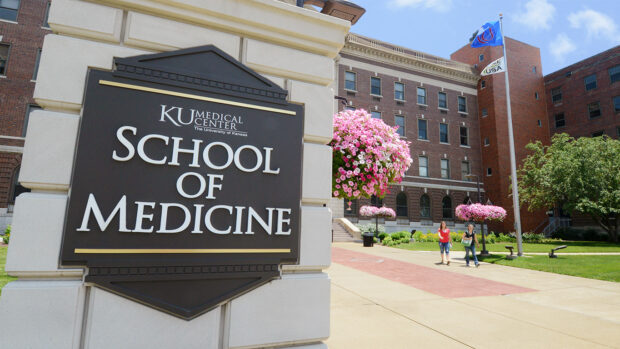HOME | ABOUT US | MEDIA KIT | CONTACT US | INQUIRE
HOME | ABOUT US | MEDIA KIT | CONTACT US | INQUIRE
Top-TIER K-20 ASSETS HELP FILL THE SUNFLOWER STATE LABOR PIPELINE.

With apologies to third-grade grammar school teachers everywhere, education in Kansas ain’t what it used to be.
The changes affecting K-20 education are broad and deep, and they are taking place in every corner of the Sunflower State. For the Kansas economy and the employers that fuel the engine of growth, much is at stake with what’s happening in the classroom.
Consider, though, the range of opportunities for that change:
• Under the aegis of the Kansas Board of Regents, the state has six traditional public universities and one municipal university that, combined, enrolled 88,000 students last year.
• The Regents also oversee 19 community colleges dispersed throughout the state, and in many cases, those institutions are often the biggest employers in their host cities. Those two-year schools, which generally produce workers that fill the most immediate employer needs, enrolled 60,000 students last year.
• On the private-college side, 20 institutions are members of the Kansas Independent College Association. They comprise a diverse learning ecosystem with intimate campuses that have as few as 300 students to liberal arts settings, many of them faith-based in their mission, with enrollments as high as 3,600.
• At the K-12 level, the state has 285 public school districts serving more than 500,000 students. They range from a few hundred students in size to more than 46,000 in the biggest urban district in Wichita. Within that universe are at least 200 largely rural districts that have fundamentally different operational and budgeting parameters than their urban and suburban counterparts. That makes coordinating and executing policy for a geographically and demographically diverse universe especially challenging.
At every level, much is taking place to reorient the educational system to improve academic achievement and produce the next generation of the Kansas workforce, with a particular focus on the most in-demand jobs and careers.
That starts at the earliest levels. Kansas directed more than $6.6 billion to K-12 education last year, including $4.5 billion from the state’s General Fund budget—more than half of that fund’s total annual receipts.
On state-funded college campuses, Regents programs had total operating expenditures of $2.72 billion in 2022, much of it aimed at instruction to support a range of diverse industries, including advanced manufacturing and life sciences. Regents schools also include the state’s schools of medicine and law (at the University of Kansas), veterinary medicine (Kansas State University), and the aerospace engineering program at Wichita State University, serving the Air Capital of the World, is the seventh-oldest in the United States.
Regents schools issued more than 22,700 diplomas of all types last year, including nearly 14,750 bachelor’s, 6,180 master’s, and 1,612 doctoral degrees. Filling that pipeline to the workforce has pushed the percentage of college-educated Kansans to 34.4 percent, topping the national average of 33.7 percent.
At the secondary level, public school districts are reaping the rewards of efforts to keep older students engaged through graduation. The Kansas State Department of Education reports that for 2022, the graduation rate for public high schools ticked up to 89.1 percent. That’s the highest graduation rate since the state adopted the current calculation rate in 2010, and when you add in those who attain GED certification, 91.6 percent of the working-age population holds a diploma, compared to the national figure of 88.9 percent.